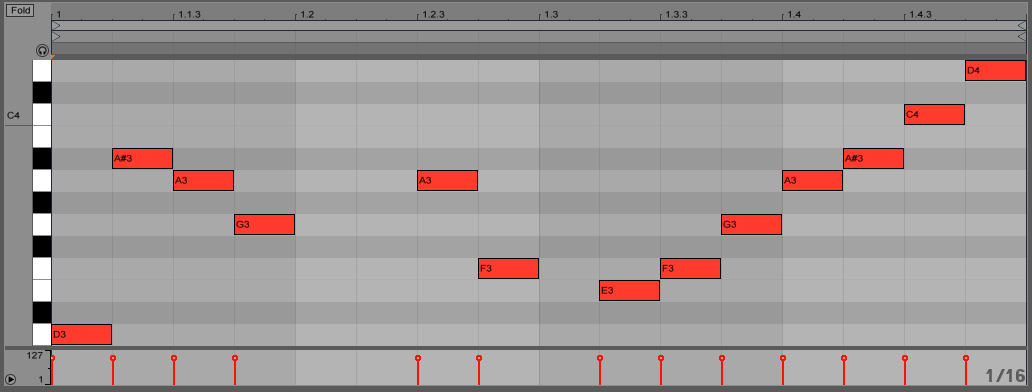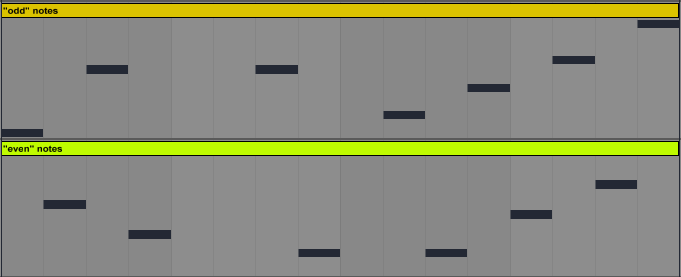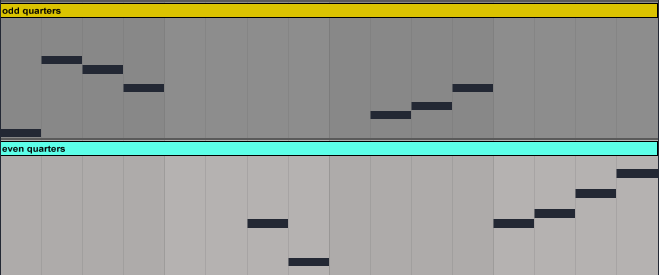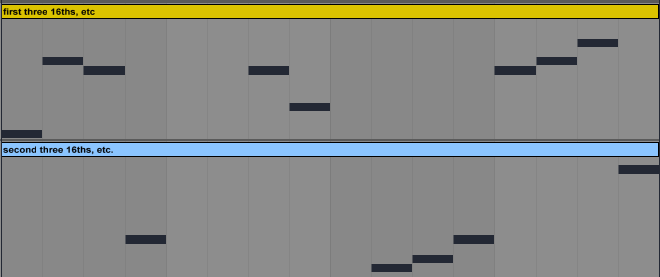Linear Rhythm in Melodies
Problem:
You can come up with the beginnings of a good melody, but you’re looking for ways to generate more variations and complexity. In general, your melodic ideas don’t have the depth or richness of those you admire.
Melodies are hard. Almost by definition, they are the most important and memorable aspect of a good piece of music. But coming up with one that’s worth remembering feels almost as challenging as writing the entire rest of the song. Here is a technique you can try for generating more interest in your melodic writing.
Solution:
Hocket is a compositional technique in which the notes of a melodic line quickly alternate between two or more different instruments, such that no two instruments are playing at the same time. It is the melodic equivalent of linear drumming (see Programming Beats 2: Linear Drumming) and can potentially turn bland melodies into interesting counterpoint. Hocket usually works best at fast tempos and when played by instruments with fast attacks and releases. It’s a difficult technique for humans to play accurately but works really well for electronic music. As an example, let’s begin with the simple loop below:

An easy recipe for turning this single voice into a hocketing pattern is as follows:
- Duplicate the track, so that you have two identical copies of the pattern playing two separate (but so far, identical) instruments.
- Modify the instrument in the new track so that it plays a different sound. This can be done by modifying or replacing the preset or even by replacing the instrument with a different one. As mentioned previously, try to find two instruments with similar volume contours. Short sounds with fast attacks work best.
- Edit both patterns so that the melody is divided between them, such that no note is ever played by both instruments simultaneously. The way in which you divide the notes is entirely up to you, but really interesting hockets tend to alternate very quickly between the voices. The simplest example is probably literal alternation— the instruments trade off every other note. Here’s how our original pattern might look if it was divided in this way:

You could also alternate by larger note groupings, such as every quarter note:

Or you could alternate by arbitrary time groupings, such as every third sixteenth (including rests):

Notice that in the last example, the pattern doesn’t divide evenly into groups of three sixteenths, so the final alternation is cut short in the bottom voice.
These examples illustrate some possibilities with a two-voice hocket, but even more possibilities become available when you use three or more voices. In an extreme example, each note could be played by a separate instrument. Hocket can give even the simplest melody a whole new life by subjecting it to a rapidly changing cascade of new timbres.